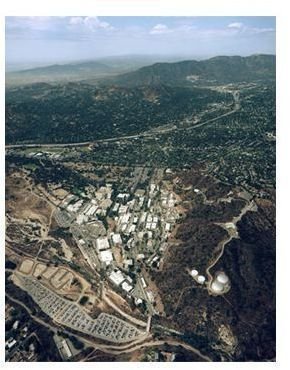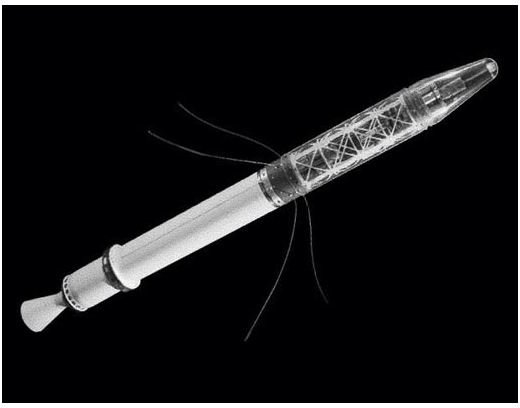History of The Jet Propulsion Laboratory (JPL): The First Rocket Engines, JATO Rockets & More
The First Rocket Engine Test
The roots of the Jet Propulsion Laboratory date to the winter of 1936-1937, when a group of graduate students at the California Institute of Technology and some layman friends tested a rocket engine in a dry California gully. The era of modern rocketry was just beginning, and the engine test was the brainchild of Frank Malina, a student of Theodore von Kármán, director of Caltech’s Guggenheim Aeronautical Laboratory (GALCIT).
Caltech would not let the group fire its engine on campus, so they conducted the test in the Arroyo Seco, at Pasadena’s outskirts. After some false starts, Malina recorded some good results, enough to inspire von Kármán to accommodate them at GALCIT.
Jet-Assisted Take-Off (JATO) Success
In January 1939, the group, in danger of breaking up as its members struggled to support themselves, received a reprieve in the form of a $1,000 grant from the National Academy of Sciences. As Malina’s crew began work on jet-assisted take-offs (JATO) in the Arroyo Seco, they received another grant of $10,000 in July, and were officially dubbed GALCIT Project Number One.
The first JATO flight was made successfully in 1941, and more money followed, this time from the United States Army, which was interested in the value of the work to national defense. As the program expanded, it officially became the Jet Propultsion Laboratory in 1944.
JPL’s First Rocket Flights

JPL was kept busy in the years following, working on various research projects for the army. It began to work with full rockets, rather than just their engines, a shift in focus that would later lead to its role in the exploration of space. The first rockets, eight-foot devices with a range of ten miles, were called Privates. They invariably flew out of control, showing the JPL researchers the importance of control in rocketry. The experience with the Privates fueled research into guidance and control technology for rockets.
The next rocket was the Corporal. Launched from White Sands, New Mexico, it reached an astonishing altitude of 230,000 feet. Its liquid fuel posed logistic problems for the Army, so the JPL developed technology for the safe use of solid rocket fuel. This technology has been used in all solid-fuel rockets and boosters since. JPL’s last Army project, the solid-fuel Sergeant missile, was authorized in 1954.
At right: Aerial view of the rugged JPL campus outside Pasadena, California. Courtesy of NASA.
JPL’s Shift in Focus to Research
The secrecy required for weapons research discomfited Caltech, a scientific institution dedicated to sharing the results of research. JPL’s director, William Pickering, and Caltech’s president, Lee DuBridge, began shifting the focus away from military applications and toward space research. In 1954, for the upcoming International Geophysical Year (1957-1958), JPL secured a project for an artificial satellite to orbit the Earth.
The American Satellite Debacle

The first artificial satellite project of the Jet Propulsion Laboratory (JPL)was dubbed Project Orbiter. But a competing satellite, Project Vanguard, from the Naval Research Laboratory was chosen instead. Project Vanguard was the more complex of the two, and it took so long to develop that the United States lost the space race: the Soviet Union launched the first artificial satellite, Sputnik 1, on October 4, 1957. A second Sputnik soon followed. The rushed Vanguard project set up its first launch, the Vanguard TV3, for December 6, 1957. TV3 failed on national television in a fiery explosion when the rocket lost thrust.
JPL meanwhile revived its Project Orbiter design in collaboration with the Army Ballistic Missile Agency. In only 84 days this project, the Explorer Program, culminated in the launch of Explorer 1, the first U.S. artificial satellite, on January 31, 1958. This success was JPL’s first achievement in space, but was by no means its last.
At right: Explorer 1_, the first U.S. satellite, also the first to carry scientific instruments. Courtesy of NASA._
JPL Targets the Planets
In 1958, President Eisenhower signed the National Aeronautics and Space Act, creating NASA as a civilian organization and ending a turf war among military agencies for control of the development of American space technology. JPL, meanwhile, was still controlled by the Army, but this situation did not last long; JPL was transferred to NASA at the end of 1958, officially becoming a civilian organization again.
The leadership at JPL decided to switch from a focus on artificial satellites, where it would be competing with industry and the military, and to start work on the science of the solar system. This crucial direction shift led to the many successful spacecraft missions JPL has flown with NASA and the ESA over the last 50 years. Check out part two for details on JPL’s successes and future missions into space.
Source
Erik M. Conway. “From Rockets to Spacecraft: Making JPL a Place for Planetary Science .” Engineering and Science 2007 70(4):2-10.
This post is part of the series: The Jet Propulsion Laboratory (JPL)
Learn the history and achievements of the Jet Propulsion Laboratory (JPL), an outstanding organization on the cutting edge of space technology. Now under the aegis of NASA, JPL started as a military organization but now works exclusively on space exploration and space-based earth science.